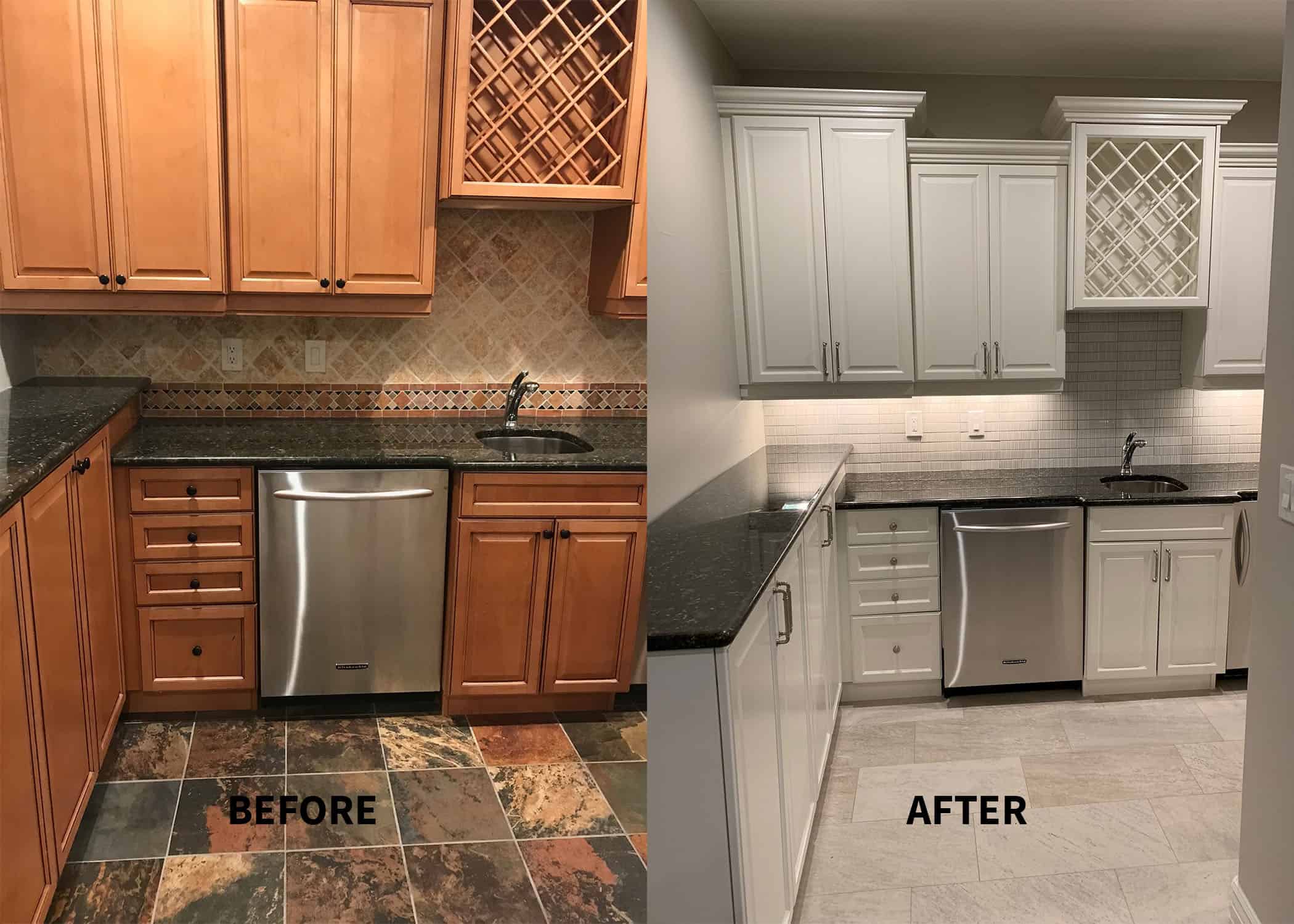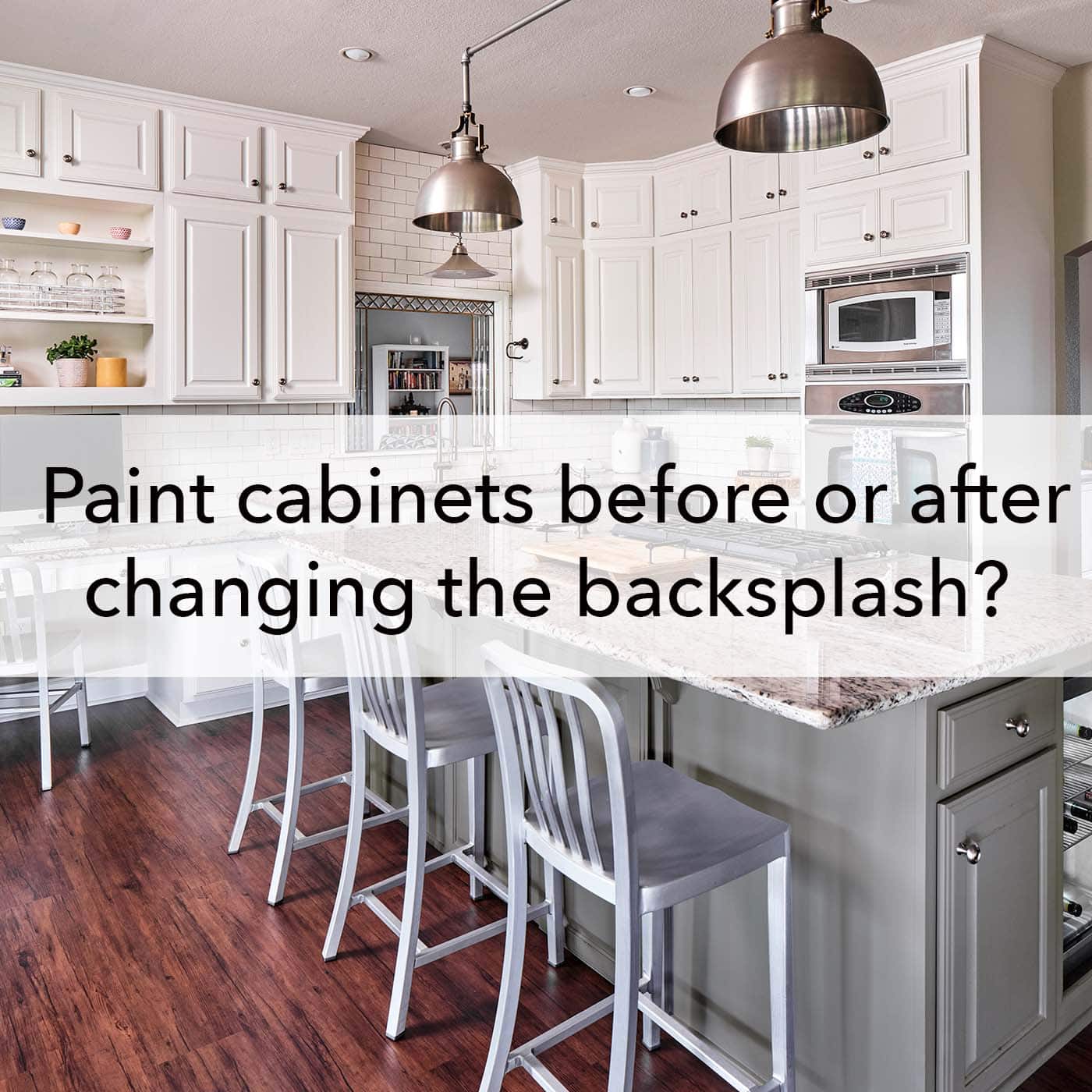Essential Preparation: Cleaning Cabinets Before Painting

Painting kitchen cabinets can dramatically transform your kitchen’s look, but proper preparation is key to a professional finish. A thorough cleaning is the crucial first step, ensuring the paint adheres properly and lasts for years to come. Neglecting this step can lead to peeling, chipping, and an overall unsatisfactory result. This section details the necessary tools, cleaning agents, and step-by-step processes for cleaning your cabinets before painting.
Necessary Tools and Materials
Gathering the right tools and materials beforehand streamlines the cleaning process. Having everything readily available prevents interruptions and ensures efficiency. The selection of cleaning agents depends on the type of cabinet finish.
| Cleaning Agent | Effectiveness on Wood | Effectiveness on Laminate | Safety Precautions |
|---|---|---|---|
| Degreaser (e.g., TSP substitute) | High, removes grease and grime effectively. | High, but test in an inconspicuous area first. | Wear gloves and eye protection; ensure good ventilation. |
| TSP (Trisodium Phosphate) | Very High, powerful cleaner for heavily soiled cabinets. | High, but use cautiously and test first. | Wear gloves and eye protection; work in a well-ventilated area; can be harsh on skin. |
| Mild Soap and Water | Moderate, suitable for lightly soiled cabinets. | Moderate, gentle cleaning option. | Generally safe, but avoid excessive water on wood. |
You’ll also need: soft cloths, sponges, scrub brushes (soft-bristled for delicate finishes), putty knife (for stubborn grime), tack cloth (for dust removal), safety glasses, rubber gloves, and a drop cloth to protect the floor.
Cleaning the Inside of Cabinets
Before tackling the exterior, thoroughly clean the interior of your cabinets. This ensures a fresh start and prevents dust and debris from settling on the newly painted surfaces.
- Empty all cabinets completely. Remove all contents, including food items, dishes, and utensils.
- Remove shelves and drawers. Wash them separately using warm soapy water.
- Wipe down the cabinet interiors with a damp cloth to remove loose dust and debris.
- For stubborn stains or grease, use a suitable cleaning agent (as per the table above) and a soft-bristled brush. Rinse thoroughly with clean water.
- Dry completely with a clean cloth before replacing shelves and drawers.
Cleaning the Exterior of Cabinets
Cleaning the exterior requires attention to the specific material and finish of your cabinets. Different surfaces require different cleaning approaches to avoid damage.
- Preparation: Protect the surrounding areas with a drop cloth. Wear safety glasses and gloves.
- Wood Cabinets: For wood cabinets, start by dusting with a tack cloth to remove loose dust. Then, wash with a mild soap and water solution or a suitable degreaser, using a soft sponge or cloth. Rinse thoroughly and dry completely. Avoid excessive water, which can damage the wood.
- Laminate Cabinets: Laminate cabinets are generally more durable. You can use a slightly stronger cleaning solution, such as a degreaser, but always test it in an inconspicuous area first. Avoid abrasive cleaners or scrub brushes that could scratch the surface.
- Melamine Cabinets: Melamine cabinets are similar to laminate in terms of cleaning. Use a mild cleaner and avoid harsh chemicals or abrasive scrubbing.
- Glossy Finishes: Glossy finishes show imperfections more readily. Use a gentle cleaning method to avoid streaks or scratches. A microfiber cloth is ideal for this type of finish.
- Matte Finishes: Matte finishes are less prone to showing imperfections. You can use a slightly more vigorous cleaning method, but avoid abrasive cleaners or scrub brushes.
- Final Wipe Down: Once cleaned, use a tack cloth to remove any remaining dust or debris before painting.
Addressing Specific Cleaning Challenges

Tackling stubborn grime and old paint on your cabinets before painting requires a strategic approach. Proper cleaning ensures a smooth, even paint finish and prevents peeling or chipping. Ignoring these challenges can lead to a less-than-perfect outcome, requiring more time and effort in the long run. This section details effective methods for addressing common cleaning hurdles.
Grease and Grime Removal Techniques
Removing grease and grime from cabinet surfaces is crucial for optimal paint adhesion. Several techniques, each with its advantages and disadvantages, can be employed. The choice depends on the severity of the build-up and the type of cabinet material.
- Scrubbing: This involves using a stiff-bristled brush and a suitable cleaning solution (e.g., a mixture of warm water and dish soap, or a degreaser). For tough grime, repeated scrubbing may be necessary. Always test your cleaning solution on an inconspicuous area first to avoid damage. This method is effective for moderate grease build-up on most cabinet materials.
- Soaking: For heavily soiled cabinets, soaking can loosen stubborn grease. Apply a warm, soapy solution to the surfaces and allow them to soak for several minutes before scrubbing. This method is particularly effective for heavily greased areas, but prolonged soaking might damage some materials.
- Specialized Cleaning Tools: Steam cleaners or pressure washers can effectively remove grease and grime, especially in hard-to-reach areas. However, use caution as high pressure can damage delicate cabinet surfaces. Always follow the manufacturer’s instructions for safe and effective use. This option is suitable for extensive cleaning but requires specialized equipment.
Old Paint and Varnish Removal
Removing old paint or varnish is essential for achieving a smooth, even finish with your new paint. The best method depends on the type of paint, the cabinet material, and the extent of the old finish. Improper removal can damage the cabinet surfaces, so proceed with caution.
| Removal Method | Suitable Materials | Safety Precautions | Effectiveness |
|---|---|---|---|
| Sanding | Wood, most solid surfaces | Wear a dust mask and eye protection. Use appropriate grit sandpaper. | Effective for thin layers of paint; time-consuming for thick layers. |
| Chemical Strippers | Wood, some metal surfaces (check compatibility) | Work in a well-ventilated area. Wear gloves, eye protection, and a respirator. Follow manufacturer’s instructions carefully. | Highly effective for removing thick layers of paint; can damage some materials if used improperly. |
| Heat Gun | Wood, metal (with caution) | Extremely flammable. Use in a well-ventilated area. Maintain a safe distance to avoid burns. | Effective for softening paint for easier scraping; requires careful handling to avoid damage. |
Water Damage and Mold Remediation
Water damage and mold growth must be completely addressed before painting. Failure to do so can lead to paint failure and health problems. The process involves thorough cleaning, drying, and possibly repair.
Addressing water damage and mold involves several crucial steps: First, identify the source of the moisture and address it immediately to prevent further damage. Next, thoroughly clean the affected area using a solution of bleach and water (always following safety guidelines and manufacturer’s recommendations). Ensure the area is completely dry before applying any primer or paint; this might require the use of fans, dehumidifiers, or even professional drying services. Any damaged wood should be repaired or replaced before painting. Failure to completely dry the cabinets can lead to mold growth beneath the new paint, causing significant problems down the line. In cases of extensive damage, professional help may be necessary.
Preparing Cabinets for Painting After Cleaning

Thorough cleaning is only half the battle in preparing cabinets for a professional paint job. Proper sanding, priming, and filling are crucial steps that ensure a smooth, durable, and aesthetically pleasing finish. Ignoring these steps can lead to an uneven paint application, chipping, and a less-than-perfect final result. This section details the necessary steps to prepare your cabinets for painting after cleaning.
Sanding and Priming Cabinets, Cleaning cabinets before painting
Sanding creates a surface suitable for primer adhesion, smoothing out imperfections and removing any remaining residue from the cleaning process. Priming provides a uniform base for the paint, improving adhesion and preventing the wood grain from showing through. The choice of sandpaper grit and primer type depends on the cabinet material and the existing finish. For wood cabinets, start with a coarser grit (e.g., 120-grit) sandpaper to remove any significant imperfections, then move to a finer grit (e.g., 220-grit) for a smoother finish. For previously painted surfaces, a finer grit might be sufficient. Always sand in the direction of the wood grain to avoid scratches.
Priming is essential for optimal paint adhesion and a consistent finish. Different primers are formulated for different surfaces and existing finishes. The table below Artikels some common primer types and their suitability.
| Primer Type | Suitable Surfaces | Application Method | Drying Time |
|---|---|---|---|
| Oil-based Primer | Wood, metal, previously painted surfaces (especially glossy) | Brush, roller, spray | 4-6 hours |
| Acrylic Primer | Wood, drywall, previously painted surfaces | Brush, roller, spray | 2-4 hours |
| Shellac-based Primer | Wood, Knots in wood, stains | Brush, roller | 1-2 hours |
| Stain-blocking Primer | Wood, previously stained surfaces | Brush, roller, spray | 2-4 hours |
Filling Gaps and Holes
Before painting, filling any gaps or holes ensures a smooth, even surface. Several materials can be used for this purpose, each with its advantages and disadvantages. Wood filler is suitable for larger gaps and holes in wooden cabinets, while spackling paste works well for smaller imperfections. For very fine cracks, a lightweight caulk might be preferable.
* Step 1: Clean the area to be filled thoroughly, removing any dust or debris.
* Step 2: Apply the chosen filling material, pressing it firmly into the gap or hole.
* Step 3: Use a putty knife or similar tool to smooth the surface of the filler, ensuring it’s level with the surrounding area.
* Step 4: Allow the filler to dry completely according to the manufacturer’s instructions.
* Step 5: Once dry, lightly sand the filled area smooth with fine-grit sandpaper.
Masking and Taping Cabinets
Proper masking and taping are crucial for achieving a professional paint job. Imagine your cabinets as a perfectly wrapped gift. Every edge, every corner, every surface that shouldn’t be painted is carefully covered with painter’s tape, creating a clean demarcation between the painted and unpainted areas. The tape should be applied smoothly, pressing firmly to ensure a tight seal and prevent paint bleeding. Use a high-quality painter’s tape designed for clean removal and minimal residue. Focus on masking areas such as hinges, handles, and any decorative trim. For detailed work, use smaller pieces of tape and carefully mask around intricate designs or corners. The application of masking tape to the cabinet doors and frames should be neat and even, leaving no gaps for paint to seep through. For example, around cabinet knobs and handles, multiple layers of tape may be needed to create a precise edge. This meticulous process is essential for achieving clean lines and a professional-looking finish. The careful masking of the cabinets prevents paint from accidentally getting onto areas that are meant to remain unpainted, ensuring a tidy and polished result.
